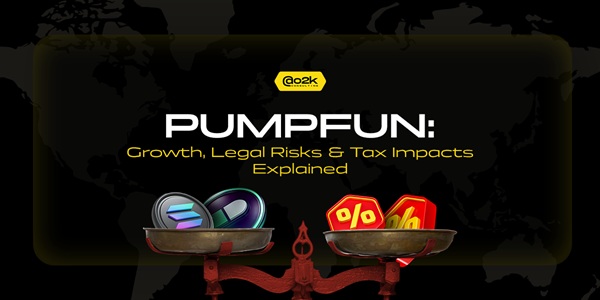It’s no news how cold the crypto winter has gotten over the past two weeks. The disastrous crumbling down of FTX’s dominoes was as swift as it was shocking. What began as a Coinbase expose on the balance sheets of FTX and its sister firm, Alameda Research on 2nd November ended with FTX filing for bankruptcy protection under Chapter 11 of the Bankruptcy Code on 11th November. While this isn’t the first meltdown the crypto-verse has experienced, it’s definitely the first from a company considered to be a major influencer and one of the top 5 crypto exchanges in the world.
During these two weeks, a variety of new twists and turns played out, including Binance’s offer to bail out FTX, their backing out of the deal after inspecting FTX’s financial records, and finally culminating in the impressive shattering of one of the giants of the crypto industry. FTX’s CEO, Sam Bankman-Fried (SBF)has also suffered a public fall from grace, for the way he handled the company finances, and tampered with billions in customer funds.

There has been a slump in crypto prices and overall confidence in the space ever since. The word on the street chanted louder daily is “not your keys, not your crypto'', referring to how people who store their cryptocurrency on centralised exchanges don’t have as much control as they’d like to think. The only positive thing that could come out of this, as some say, is that definitive steps would finally be taken in the area of regulation.
The SEC and Crypto Regulation
Over the past two years, as adoption increased, the Securities and Exchange Commission led by Gary Gensler has borne down aggressively on crypto businesses. The standard approach was “regulation by enforcement”. That, however, did not lead to any new or unique regulation to be established for crypto assets. In his view and that of his predecessor, Jay Clayton, cryptocurrency exchanges are securities exchanges and therefore, do not need a different type of regulation. This doesn't sit well with a number of cryptocurrency exchanges who consider the existing rules too strict and therefore, do not comply. It is for this reason that these cryptocurrency exchanges have separate arms for their global and US operations.

FTX was located in the Bahamas, which has more favourable and relaxed crypto regulation. It had a separate arm in the US that had to comply with the stringent laws. For this reason, some praise Gary Gensler because consumers and investors in the US had more controlled losses. However, many fingers from industry executives are still pointed towards the SEC for failing to protect customers earlier despite their aggressive “show” of regulation. Connections have been made between the SEC chair and the CEO of FTX, SBF that leads people to think there might be a power plot to protect the CEO. It is public knowledge that Mr. Gensler had a private meeting with Sam Bankman-Fried months before this meltdown and it is alleged that he was helping SBF and FTX work on what would, in effect, give FTX regulatory monopoly in the US. Attention is also being called to the fact that SBF is a major donor to the Democratic Party that Gary Gensler serves under. The company has donated north of $20million to party donation campaigns. It has also been brought to the forefront that the General Counsel for FTX US, Ryne Miller, has previously worked directly with Gary Gensler as his Legal Counsel. And lastly, the SEC chair who used to be a former professor at MIT, used to work closely with the CEO of Alameda Research, Caroline Ellison’s father, Glen Ellison. We definitely can’t accuse the SEC chair and FTX CEO of being in cahoots to create this imbroglio, but the fact that there’s a pattern that consistently connects him to the FTX burning bush is disturbing.
What About the Customers?
There’s no quick way to determine what’s going to happen to customers and their funds, especially since FTX has filed for bankruptcy. It doesn’t make it easier that on the same night as their bankruptcy filing, alleged hackers stole nearly $400 million from the firm and at least $1billion in customer funds are still missing.
However, in a rare sprinkle of fortune in this FTX case, the FTX user agreement acknowledges account holders as the owners of their cryptocurrency. Those crypto assets never became FTX property, and therefore customer money won’t be treated as FTX property in bankruptcy proceedings. Usually, when a company files for bankruptcy, their assets and properties are used to pay back their creditors with secured claims in order of importance. Unsecured creditors (who are the customers, in most cases) get shifted to the back of the line in the process of reimbursement.
This doesn’t mean that there’ll be immediate refund of customer money, as FTX creditors will certainly argue to prove that customers are unsecured creditors. The unclear waters have been made even murkier because FTX violated its own terms on the contract by transferring customer funds to Alameda Research, its sister trading firm. If the monies had already been transferred and were no longer in the custody of FTX, it makes it easier to argue that customers have lost rights to their assets.
It’s most likely going to be a lengthy procedure in court, and no one can really predict what way the tides will flow.
Moving Forward as an Industry
The negative effects of this crypto industry meltdown are undeniable, unprecedented and still unfolding. There’s still a lot of work to be done in the regulatory space, and that might have to start with a separation of DeFi regulation from CeFi regulation. The reason so many industry giants are against regulation is because it has the potential to choke decentralised financial applications (that tend to be much more transparent) growth and innovation. But, centralised financial institutions need to be regulated whether they are crypto-focused or not. This FTX debacle has made that very clear. Without set laws and mandatory compliance, the industry can suffer this type of occurrence over and over again, without certainty that the customers will be protected.

Lastly, whether you support more regulation or not, it is important to note that it was Sam Bankman-Fried who failed, and not the blockchain technology. The traditional financial institution that was FTX should be addressed separately from the blockchain when regulations are being worked on.




.png)
























.jpeg)

























.jpg)





































